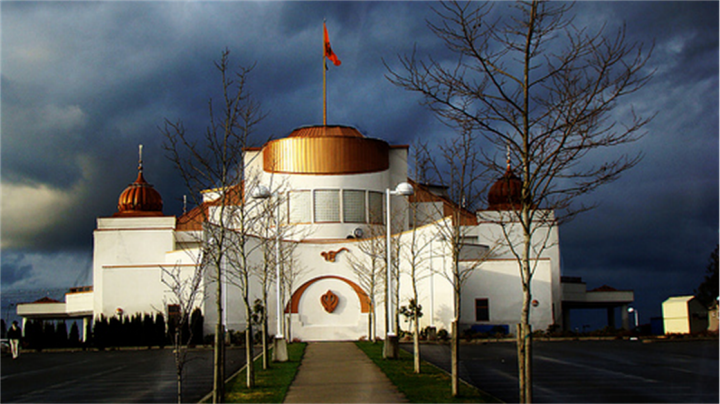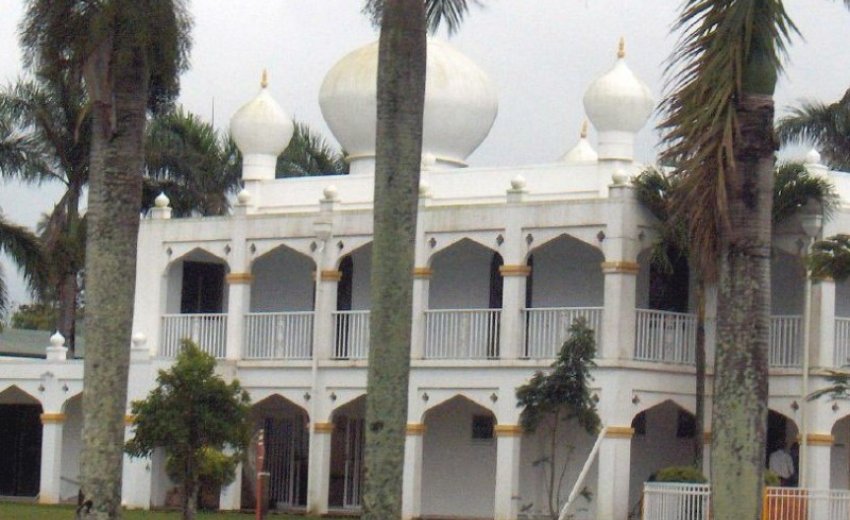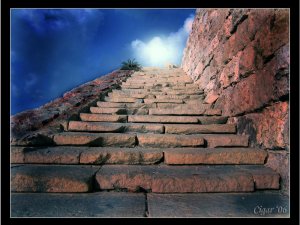We identify ourselves with our roots. The surroundings that nurtured us and the culture that defined us. Over time, we have figured out ways to express the same and architecture has been of vital play.
That being stated, our identity (Sikh) in the west is mistaken and our Guru-dwaras are also looked upon as mosques.
As an architect, I would like to make the following points which could change the appearance of Guru-dwaras as mosques and could certainly reduce chances of shootouts and vandalism of our places of worship. Another point I would like to emphasize on is that, regardless of our identity being mistaken, Sikhs should make their new Guru-dwara buildings & schools to match their Newest religion concept.
Let us now take a look at our most famous and popular Gurdwara.
Harimandar's Dome
(Golden Temple)
The present-day gurdwara was renovated in 1764 by Jassa Singh Ahluwalia The gurdwara was completed in 1604. Guru Arjan installed the Guru Granth Sahib in it and appointed Baba Buddha as the first Granthi (reader) of it in August 1604. In the mid-18th century, it was attacked by the Afghans, by one of Ahmed Shah Abdali's generals, Jahan Khan, and had to be substantially rebuilt in the 1760s.
Arch & Dome: method of construction 16th to 19th Century, now known as building technology. Every place, "period" has its own building materials, tools, and techniques. All such criteria make its architecture. This is the best explanation in short and simple Language.
Architecture is also strongly influenced by the time and space, availability of materials in the region and construction technology, simply called construction method.
Monitored by the chief supervisor, leading team member of construction, we call as an architect today.
Gurdwara architecture started in the 16th century when brick (Nanak Shai) and lime mortar were major materials. The 19th century gave us better kiln-dried brick, cement, RC Concrete, steel & glass.
The construction method for centuries was bricklaying, plastering, and painting, bare hands or built with a few tools, and built slowly. Today's technology allows buildings to be pre-cast in concrete and steel structures are bolted together with greater speed. Newest materials are Structural Glass and safety glass, which allow us to build a complete enclosure using glass.
This article is focused on Guru-dwaras in USA/ Canada and other developed countries where Gurudwaras are built with structural steel, stud walls and the latest option could be new materials like structural glass. On the other end, least used materials are concrete, brick/ block, and plaster which were used earlier.
Though functions of spaces in the planning of contemporary Gurudwara architecture won't vary much, anywhere in the world, facades may vary due to one's perception and use of decorative elements like arches and domes which are perceived as part of the Gurudwara architecture.
Notable features are the arches and domes adopted presently.
One can notice a lot of deviation in arch forms in Gurudwaras that are being built recently and they do not have any resemblance with the Golden Temple Arch. Some domes also have different form either due to the absence of an exact drawing to create a replica or the design is left to a constructor or builder, resulting in accidental forms and varied decorative elements. Materials employed are also different, the most popular being copper or polished brass. Most commonly used domes are made of fiberglass and their durability or life has no proven records.
My outlook as a Sikh architect is that we should re-evaluate following features of our Gurudwara Design Elements: DOME & ARCH in order to understand their significance today. Considering that this is an article, I have limited myself to key points and am only giving pertinent information.
Historical Perspective
If we look at it from a historical perspective we find the dome in the 16th cent. Persian Mosques, Churches in Europe, later in Stupas in India and neighboring countries. Presently we find them in Guru-dwaras in all most all the countries of the World.
Aesthetic of Dome.
The adding of dome alone to any form, suitable in size or not, does not guarantee to make your building appearance aesthetically Sound or a Sikh Temple in my professional opinion.
To design a magnificent building that can be compared to the Golden Temple, one should balance all elements of design.
Domes of the Gurd-wara building confuse people as mosques because predominantly domes are used in mosques and their number is really large, in many countries of the World. Remember, they are the second largest religion. Therefore we shouldn't make them our Gurdwara identity, in the West and suggest to devlop upto date architecture, using upto date materials and technology for India.
Simply mimicking forms & shapes or adding a similar form will not generate a proper building but an odd disproportionate building. If we continue to follow this method, we will not allow creative authentic NEW architecture of Gurudwaras that we can call progressive Gurdwara (Sikh) architecture.
In this article are included pictures of four very important contemporary landmarks of Indian temples. Each of them has a different dome. Those to me are signs that we are adaptable and open to finding an appropriate form and inching towards the discovery of appropriate functional form.
Functional Aspect of Dome
Natural Light, ONLY SOURCE until mid19th Century.
Most Churches and Mosques have lighted domes as one can see in pictures below. It did not matter if they were built in the 17th, 18th or 19th century, nor did the location. Light in the large sanctuary was only possible this way, even in the day time.
Dome in the center allowed light from all directions to light the otherwise dark large space in the hall, I am in favor of skylight to bring in the light to the large hall which also saves energy, but not the added on fiberglass or fake dome of any other material.
Recently Built and Most Expensive Guru-dwara in the World.
Guru Nanak Darbar Dubai
A glass dome as sky light. The irony is that this Guru-dwara is in the Middle East, where Dome would be considered part of a familiar architectural element. But the British Architect refrained from using it. In spite of his visit to Harmandar and many important Guru-d-waras in the world.
Progress in making large size glass also permits making today's interiors more lighted. Further new inventions in structural glass, safety glass, energy saving glass allows totally new possibilities for lighted interiors and saving in thousands of dollars in power/ electric bills.
The functional aspect of architectural features is slowly fading away and are now being added as decorations that mimic the actual while causing more harm than good.
Almost all Gurdwaras have Domes, but rarely do they have provision for light. Most of them are fake and added on. Many a dome are not well placed to function, Chandowa is usually larger and may even cover the light well. The idea behind adding a dome to give the building a look of a Guru-d-wara, comes from our association with the oldest and most famous landmark Hari-Mandir. 'Harmandar' = Gods Temple, being its most popular name, given by British and understood by all English speaking foreigners today as Golden Temple.
The function of a DomeMost Domes are only added on to Form the appearance but not part of the required construction or for the purpose of light.
Sikh gurdwaras were built by Muslim craftsmen. This was because:
1. Punjab was in close vicinity to Islamic countries (Persia and Afganistan).
2. Indian architecture did not have examples of rooms with large spans. Hindu temples of the south, only covered an area for the deity, relatively very small area to cover.
Harimandar was built in 1604 and the present day Gurdwara was rebuilt in 1764 by Jassa Singh Ahluwalia. Ranjeet Singh covered the top with gold, hence the name Golden Temple.
Present day fiberglass dome - Fake/Psuedo Architecture.
Such domes are being used in most Guru-dwaras that are built in USA & Canada, without consideration of proportion or consideration of the function of light requirement. The irony, however, is that extra power/electricity is used to light and emphasized this dome for the night.
Guru-dwara Guru Nanak Surrey Canada with many favorable features: Unique Clear Dome, Transparent fence, One God - Clear Message Graphics, contemporary building good proportions and Functional Contemporary Form. Some Landscape also adds to the visual appeal.
First Modern, Architecturally designed Guru-dwara of India's Modern City. Built in 1960
The unique design has been created with Concrete arches finished with Marble, using the structural system to achieve column free space-Hall.
A functional lighted dome with a suitable form for the current Architectural Period-time.
Gurudwaras With Lighted Dome

Proportions, Geometrical arch circular windows, side arches to fit the Façade treatment Abbotsford BC- Dome Form adapted to arch, Placing of Nissan Sahib Central Walk, Landscape
A conscious Design consideration could make your building more appealing and will also reflect your community's progressive attitude.





